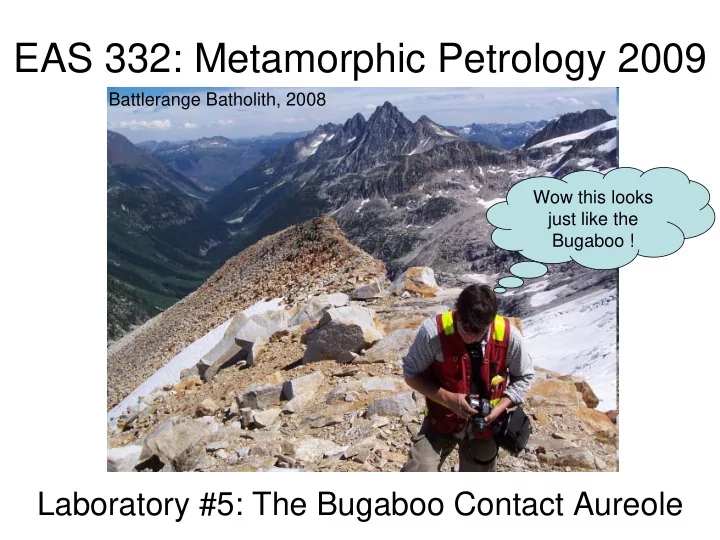

EAS 332: Metamorphic Petrology 2009 Battlerange Batholith, 2008 Wow this looks just like the Bugaboo ! Laboratory #5: The Bugaboo Contact Aureole
What is a contact aureole?
How do you identify a contact aureole? • How do you identify a contact aureole? – Change in mineralogy (i.e. garnet +/- andalusite +/- cordierite +/- biotite) – Change in texture (ex: increasing grain size, massive)
What minerals should you expect to see in this lab ? • The rocks that are being metamorphosed are part of the Horsethief Creek Group (which are Al-rich rocks!) • What happens when you metamorphose an Al-rich rock? … you get Al-rich minerals !!! (andalusite, staurolite, cordierite etc.) Sillimanite Andalusite Staurolite Cordierite
A special note on cordierite… •Remember this rule and your life will be a lot easier: Cordierite is a low-rida and andalusite is a high flya ! Cordierite also commonly exhibits a special type of Ok…maybe that phrase isn’t twinning called cyclic twinning that catchy but cordierite does weather low and the other Al- rich minerals tend to be resistant to weathering and “stick out” so check out that hand specimen !!!
A special note on sillimanite… Remember!!! Sillimanite’s habit can range from prismatic (see above) to fibrous (see right)
What do I need to hand in? • Answer all of the short questions “hidden” within the text AND • A full rock description of: 92-BB-65F OR 89-BB-23
Recommend
More recommend